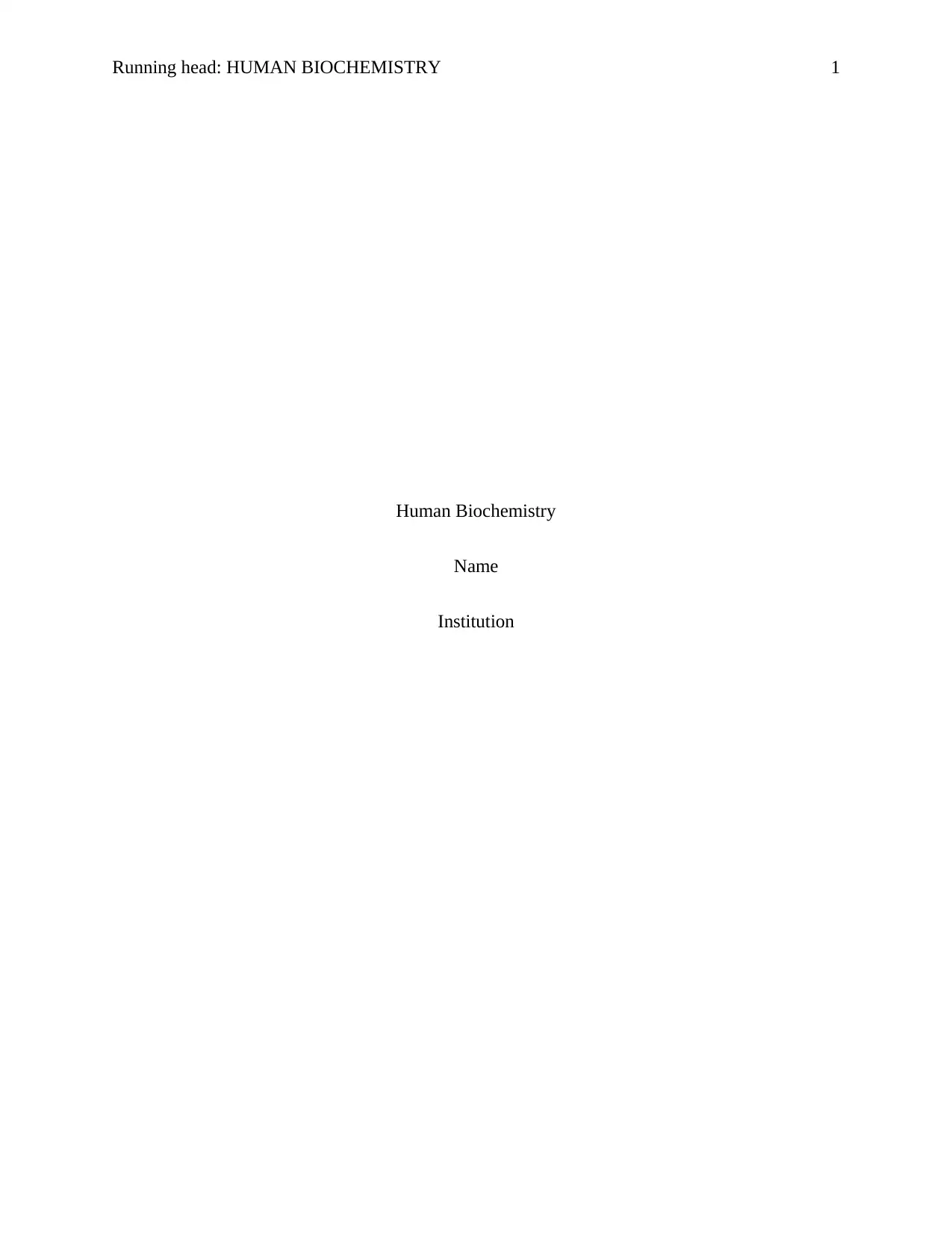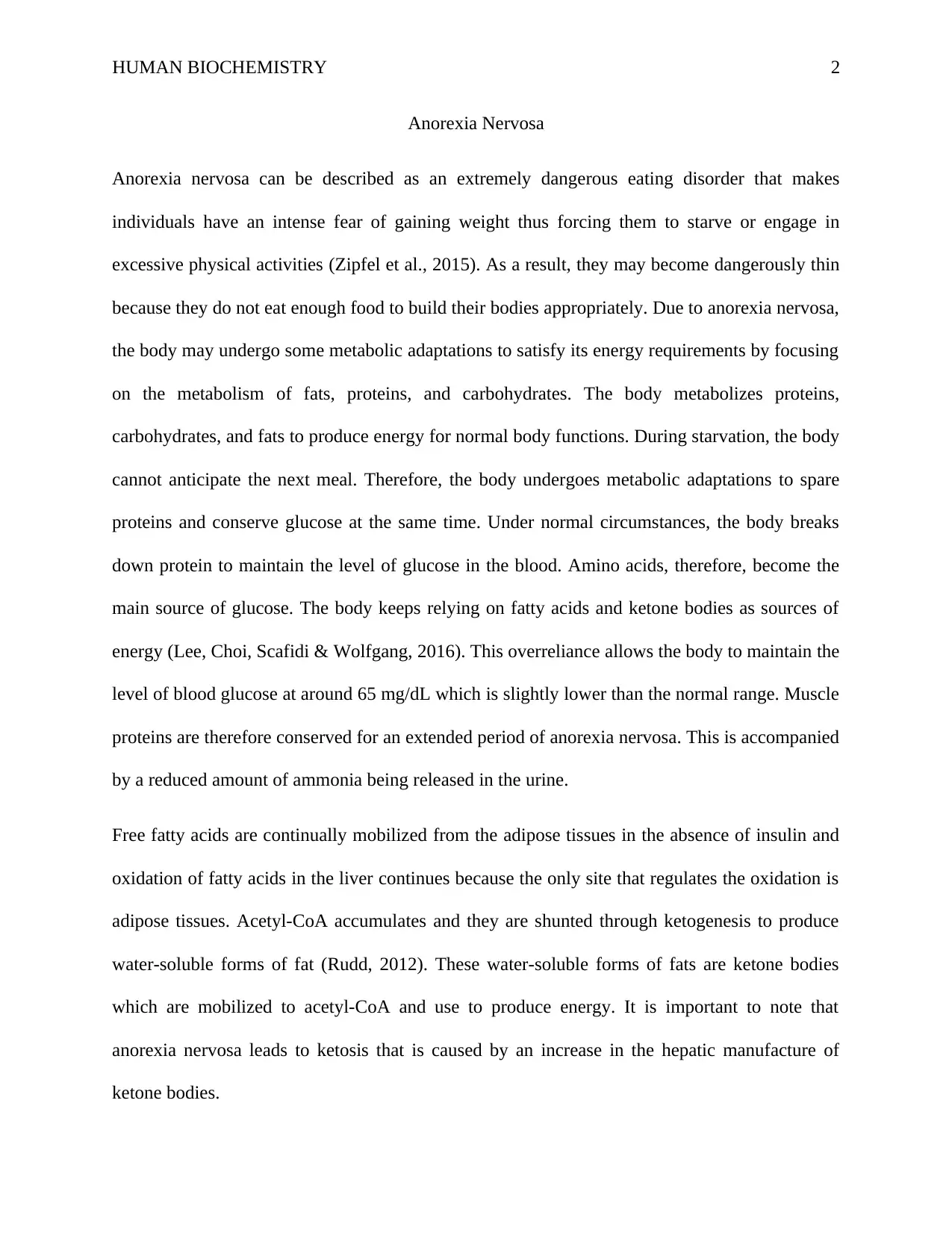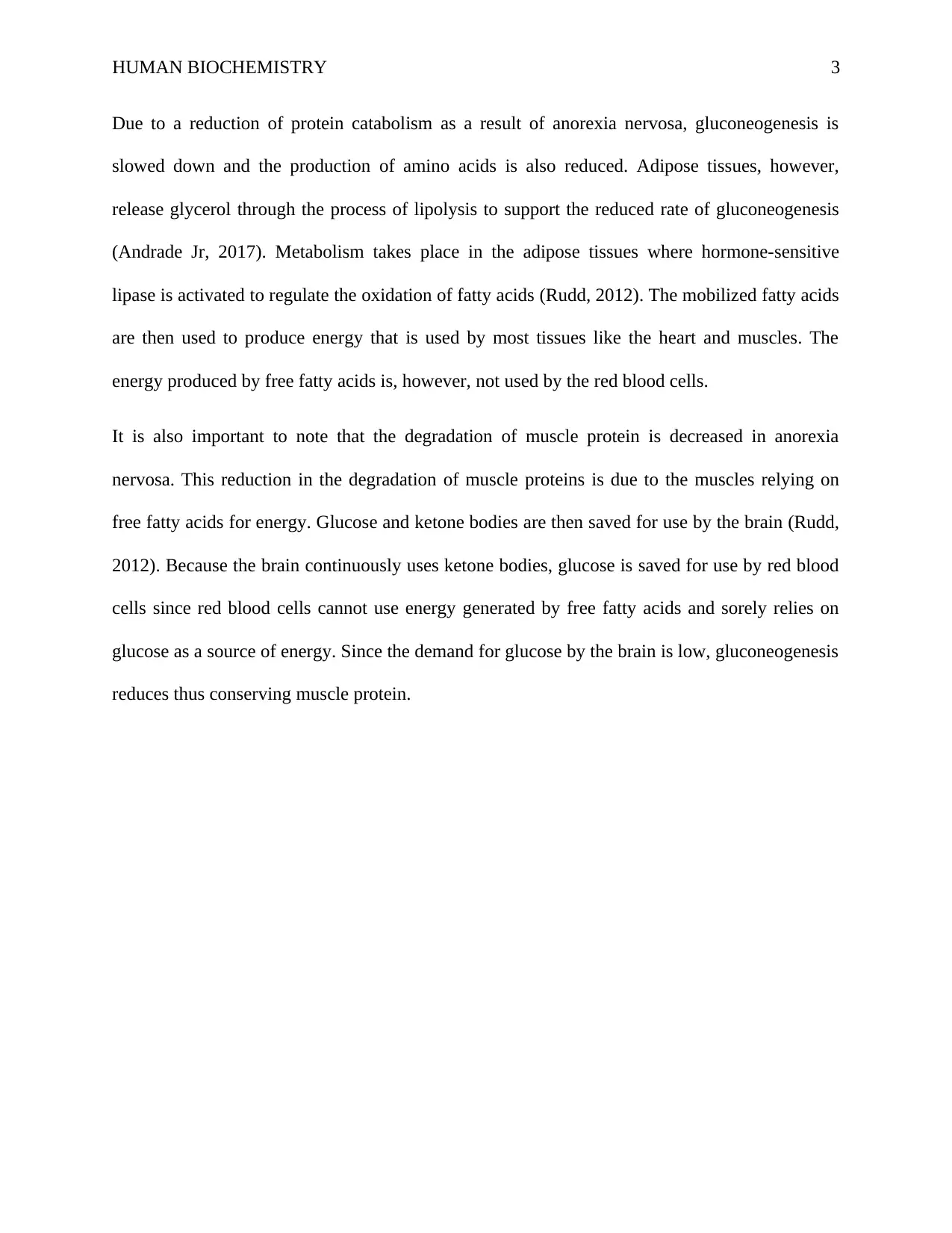Human Biochemistry: Metabolic Responses to Anorexia Nervosa - Analysis
VerifiedAdded on 2022/09/16
|4
|754
|21
Homework Assignment
AI Summary
This assignment delves into the metabolic adaptations that occur in individuals suffering from Anorexia Nervosa, an eating disorder characterized by an intense fear of weight gain and severe food restriction. The paper explores how the body responds to starvation by altering the metabolism of fats, proteins, and carbohydrates to meet its energy demands. It highlights key processes such as the body's reliance on fatty acids and ketone bodies, the conservation of glucose for the brain and red blood cells, and the role of gluconeogenesis. The analysis emphasizes the metabolic adaptations, including ketosis, reduced protein catabolism, and the mobilization of glycerol from adipose tissues. The paper concludes by discussing the impact of these metabolic shifts on energy production and the body's ability to maintain essential functions. It references key studies to support the discussion.
1 out of 4











![[object Object]](/_next/static/media/star-bottom.7253800d.svg)